ABA Therapy Techniques for Addressing Communication Delays in Children with Autism
Harnessing ABA to Enhance Communication in Autism
Understanding ABA's Role in Autism Communication Therapy
For children diagnosed with autism, communication delays can be a significant barrier to personal and academic success. Applied Behavior Analysis (ABA) has long been recognized as a leading methodology in addressing these challenges, using evidence-based techniques to help children develop essential communication skills. This article explores the effectiveness, strategies, and collaborative approaches within ABA therapy that support children with Autism Spectrum Disorder (ASD) in communication development.
Understanding the ABA Method for Autism
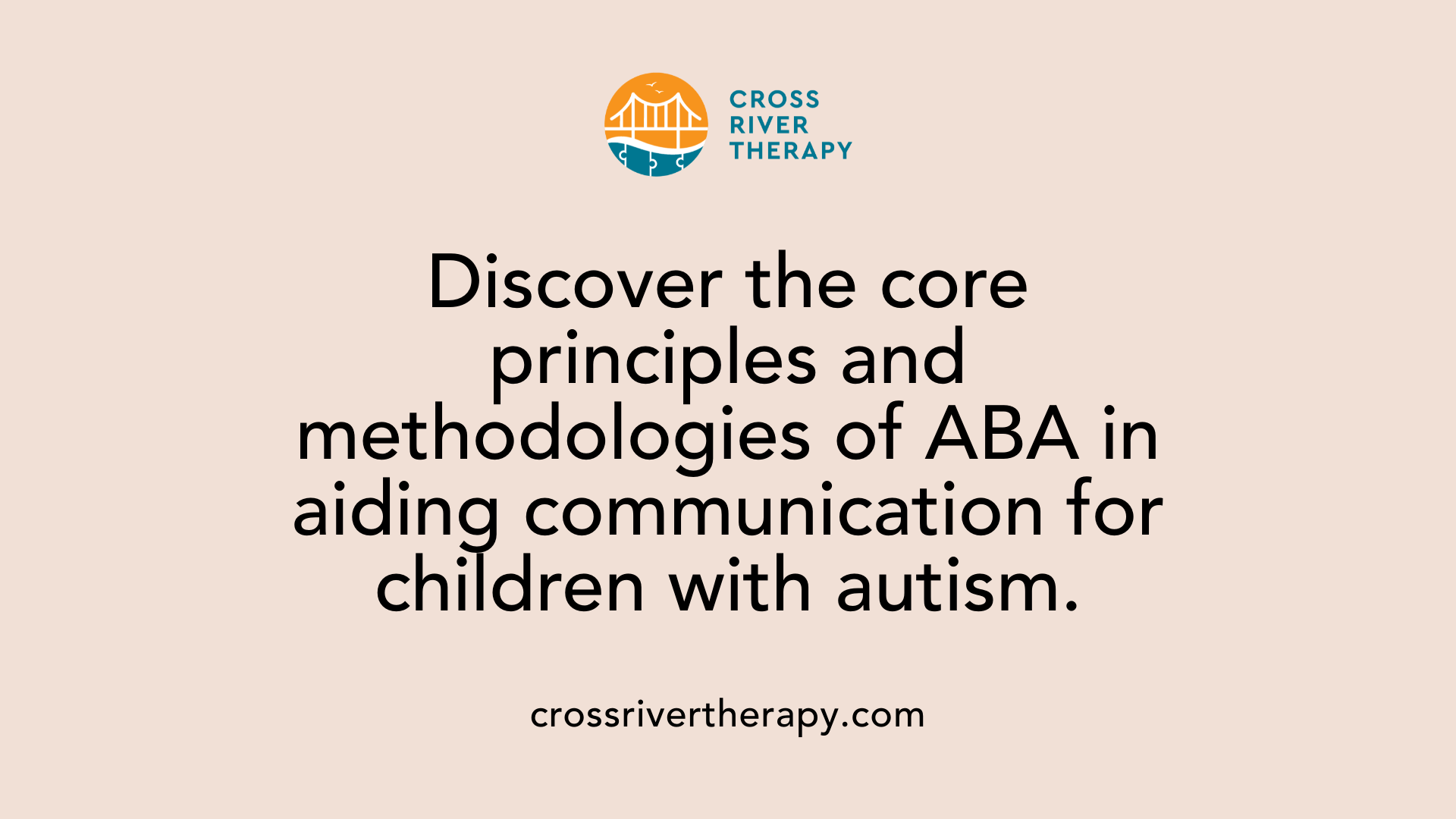
What is the ABA method for autism?
Applied Behavior Analysis (ABA) is a research-driven intervention used primarily for individuals diagnosed with autism and other developmental disorders. This method focuses on increasing positive behaviors while effectively reducing undesirable ones. The ultimate goal is to enhance social interactions and foster essential life skills through tailored treatment plans designed by certified professionals.
Definition and foundations of ABA
ABA is rooted in behavioral psychology and employs various techniques such as Discrete Trial Training and the Early Start Denver Model. These methodologies are crucial for addressing each child's unique learning needs, especially in improving communication and social skills. ABA has earned recognition as the gold standard for autism treatment due to its evidence-backed positive outcomes, particularly when initiated early in childhood.
Behavior modification techniques
Modern ABA emphasizes positive reinforcement strategies. This means that when a desired behavior occurs and is followed by a reward, the likelihood of that behavior being repeated increases. Techniques like the A-B-C (Antecedent-Behavior-Consequence) model help therapists identify the triggers and aftermath of behaviors, allowing for effective modification and support.
Customizable treatment plans in ABA
One of the powerful aspects of ABA therapy is the customization of treatment plans. Each program is developed based on rigorous assessments of a child's skills, needs, and preferences. These individualized plans might include goals related to communication, social skills, self-care, and academic support. By continually monitoring progress and utilizing data collection, therapists can make necessary adjustments to ensure optimal development and engagement in essential therapies, including speech and occupational therapy.
Communication Delays and ABA Interventions
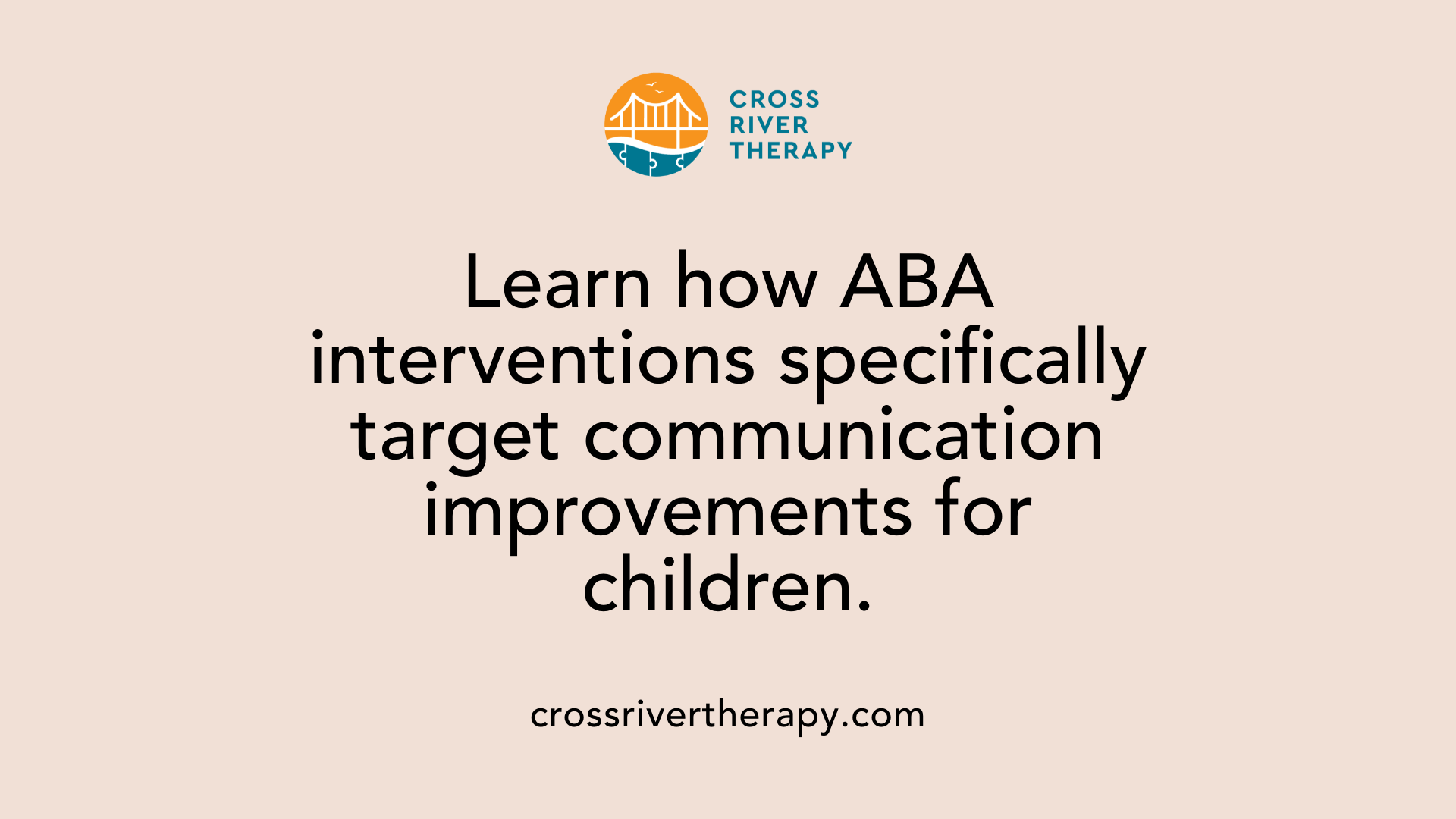
Speech and Language Improvement
ABA therapy plays a vital role in addressing communication delays for children, particularly those with autism. The focus on enhancing speech and language skills is achieved through various tailored interventions. Techniques such as mand training, which encourages children to request items or actions, and echoic training, involving the repetition of sounds, are fundamental in fostering effective communication. Intraverbal training, where children learn to respond to questions or prompts, further helps develop their conversational abilities.
Early intervention can lead to substantial benefits in addressing communication challenges. Studies indicate that when children receive support by age three, it significantly enhances their learning and social interaction capabilities.
Techniques Used in ABA for Communication
The techniques employed in ABA therapy are designed to be engaging and effective. Strategies like Functional Communication Training and the use of Visual Supports, such as picture cards, help children comprehend and express their needs clearly. These methods not only assist in reducing problem behaviors but also create a more conducive learning environment.
Positive reinforcement is another effective element of ABA; rewarding a child's successful communication efforts encourages them to continue using these skills.
Early Intervention Importance
Early intervention is crucial in maximizing communication development. It is generally agreed upon that addressing these challenges promptly can lead to better outcomes across all areas of learning and socialization.
An integrated approach utilizing ABA within a framework that includes speech and occupational therapy can expedite progress. This multi-faceted strategy addresses behavioral, communication, and functional skills simultaneously, ensuring children receive comprehensive support tailored to their needs. By involving parents in this process, the reinforcement of skills can occur in everyday interactions, enhancing the likelihood of success.
| Strategy | Purpose | Benefit |
|---|---|---|
| Mand Training | Encourages requesting | Builds functional communication skills |
| Echoic Training | Promotes repetition | Aids in sound and speech recognition |
| Functional Communication Training | Teaches alternative expressive methods | Reduces frustration and problem behaviors |
| Visual Supports | Assists comprehension | Offers clear representations to enhance communication |
Key Strategies and Approaches in ABA
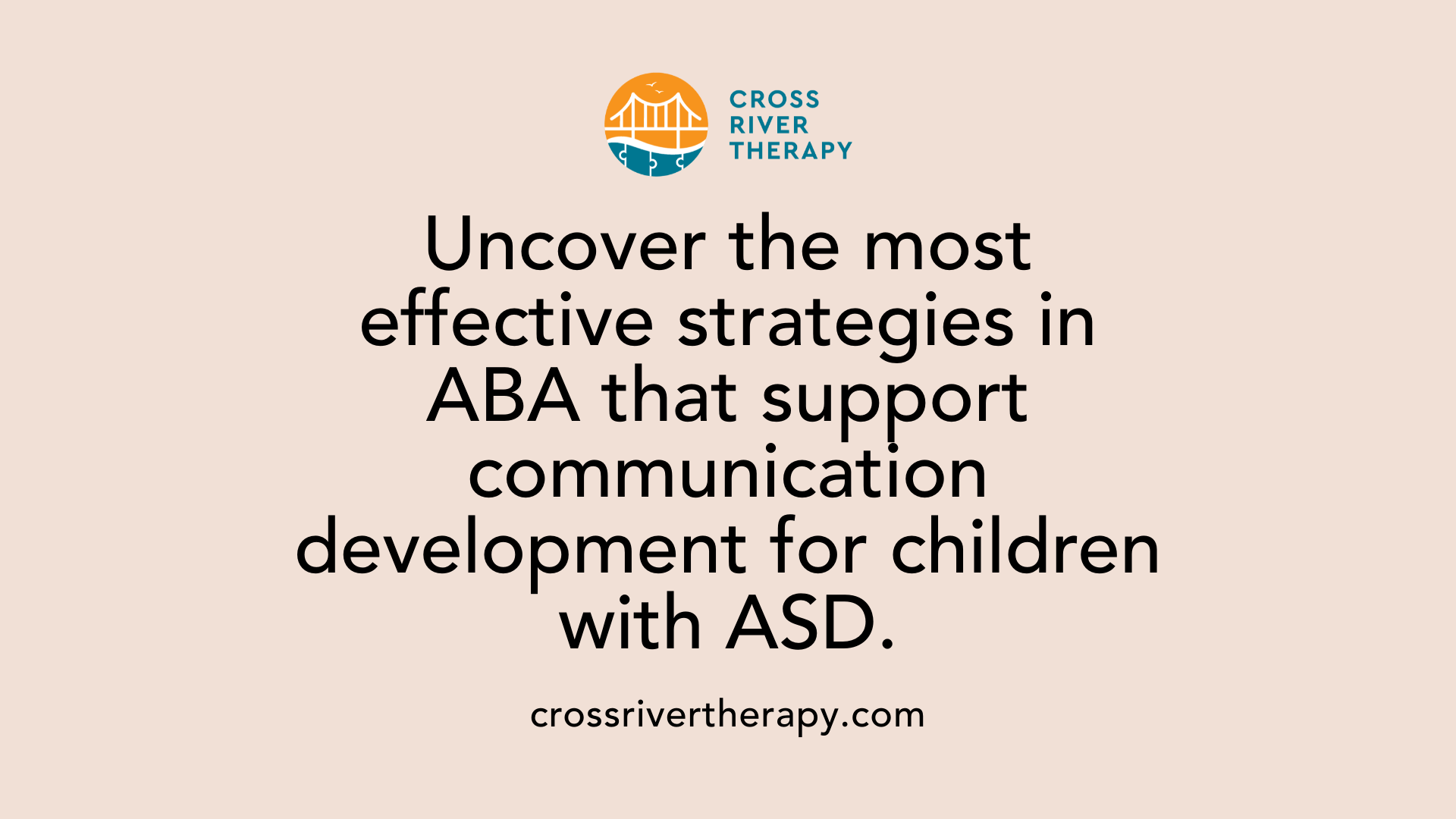
What strategies and approaches within ABA therapy support children with ASD in communication development?
Strategies and approaches within Applied Behavior Analysis (ABA) therapy play a pivotal role in supporting communication development in children with Autism Spectrum Disorder (ASD). One prominent method is the use of communication tools such as communication boards, Picture Exchange Communication Systems (PECS), and speech-generating devices (SGDs). These tools empower children who are nonverbal or have limited speech to express their needs and emotions more effectively.
ABA emphasizes straightforward communication. Therapists use clear and direct language, which helps minimize confusion and enhances children's understanding. In addition, modeling appropriate communication behaviors is crucial. When therapists demonstrate correct speech patterns and social interactions, children can learn through observation and imitation. Positive reinforcement is another key component in this approach. Rewarding children for their communication attempts encourages them to continue practicing their skills.
Visual aids and social stories are also instrumental within ABA practices. These tools help children navigate social situations by presenting information in an easily digestible format. Social stories can illustrate scenarios they might encounter, setting clear expectations and responses to various social cues.
In summary, ABA incorporates a variety of strategies including communication tools, positive reinforcement, and visual aids, collectively fostering the communication skills of children with ASD. Below are some of the strategies summarized:
| Strategy | Description | Benefits |
|---|---|---|
| Communication Tools | PECS, communication boards, SGDs | Enables effective expression of needs and emotions |
| Positive Reinforcement | Rewarding desired communication behaviors | Increases likelihood of repeating positive actions |
| Modeling | Demonstrating appropriate behaviors | Facilitates learning through imitation |
| Visual Aids and Social Stories | Organized visuals to explain social situations | Enhances understanding and navigational skills |
This integrated approach helps children overcome communication hurdles, paving the way for more effective engagement in their learning environment.
The Collaborative Power of ABA, Speech, and OT
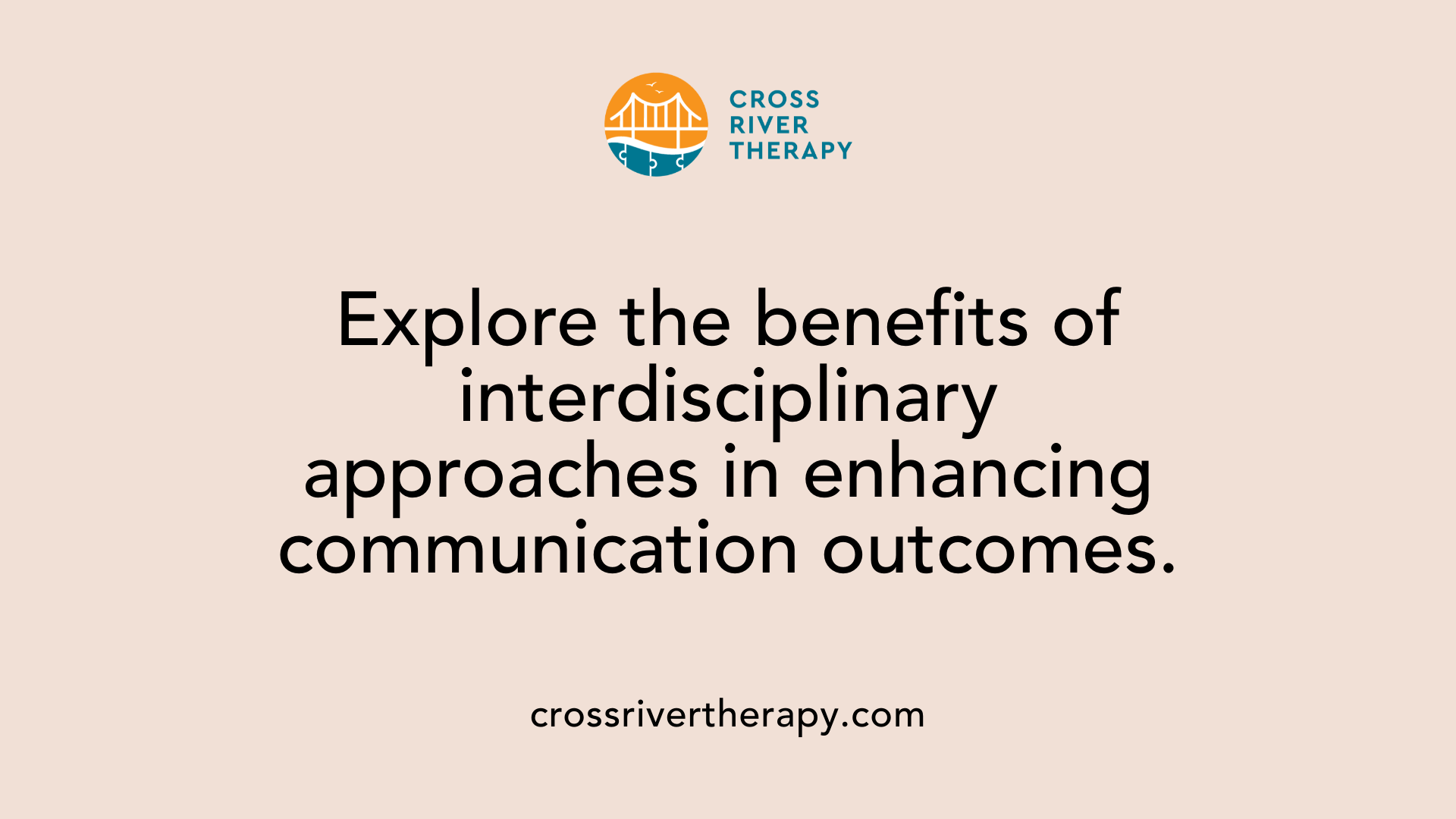
What insights exist on collaborative methods involving ABA, speech therapy, and occupational therapy for communication outcomes?
Collaborative methods that bring together Applied Behavior Analysis (ABA), speech therapy, and occupational therapy (OT) can greatly enhance communication outcomes for children, especially those with autism. Each therapy plays a distinct yet complementary role in fostering development.
- ABA focuses on behavior modification and communication improvement by creating individualized plans that reinforce positive behaviors. This method utilizes techniques like positive reinforcement to instill desired communication behaviors, addressing both expressive and receptive language needs.
- Speech therapy directly targets language skills, helping children articulate their thoughts and understand others. This ensures that as children engage in social settings, they can express their needs and feelings more effectively.
- Occupational therapy (OT) addresses the physical and sensory aspects of communication. By helping children develop fine motor skills and process sensory information, OT creates a foundation for clearer expression, increasing participation in social activities.
When these therapies are integrated, they create a comprehensive strategy that aids the child's holistic development, enabling them to engage more fully in daily interactions and academic settings. Research consistently shows that early and coordinated intervention using these multidisciplinary methods results in better socialization and communication outcomes for children with developmental challenges.
In summary, the collaborative approach of ABA, speech therapy, and OT not only helps in enhancing communication skills but also improves overall developmental trajectories for children with speech delays.
Early Intervention and Its Critical Role
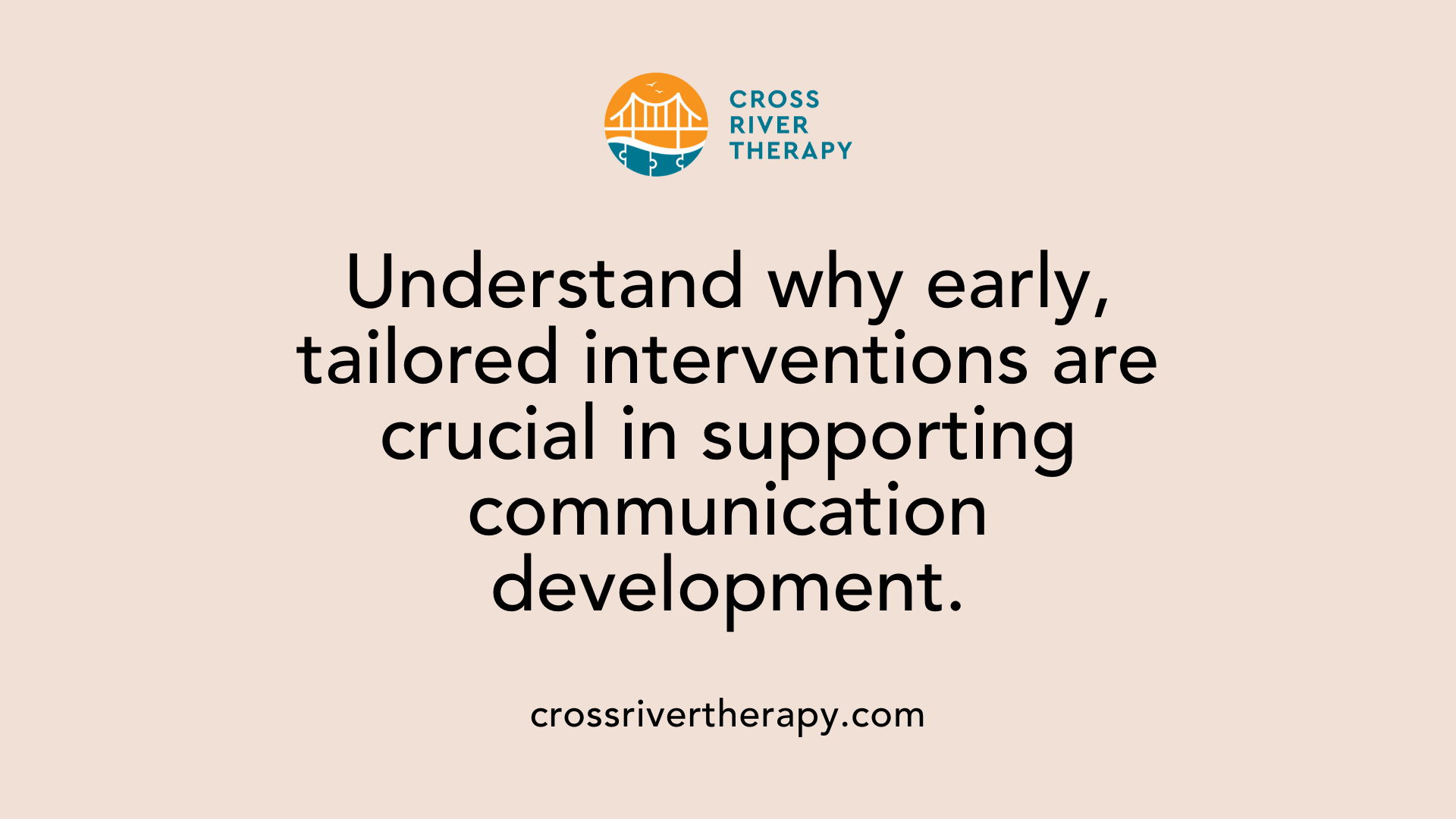
Why is early intervention and individualized therapy crucial for children with communication delays?
Early intervention is vital for children with communication delays as it provides immediate support tailored to their specific needs. This timely approach leads to significant enhancements in communication skills, social interactions, and overall developmental outcomes. Applied Behavior Analysis (ABA) is a proven, evidence-based method that focuses on crafting individualized therapy plans that adapt to each child's unique strengths and challenges.
Starting therapy before the age of four maximizes learning potential and reduces the risk of long-term challenges, often minimizing the need for future services. Each therapy plan is designed to evolve alongside the child's progress, using ongoing assessments to fine-tune strategies aimed at improving communication and social participation.
Additionally, early intervention fosters essential skills necessary for academic readiness and daily activities. Children learn to express their needs effectively, which aids in smoother integration into social settings, ultimately supporting a more successful school experience and enriched social relationships.
Key Aspects of Customization in Therapy Plans
Individualized therapy in ABA involves:
- Detailed Assessments: Understanding each child's unique capabilities and required support.
- Tailored Objectives: Creating specific goals in areas like communication and social skills.
- Dynamic Adjustments: Adapting therapy responses based on the child's ongoing progress and challenges.
This customization is crucial for maximizing the benefits of therapy, ensuring that each child receives the right encouragement and tools necessary for growth.
Scientific Support for ABA Techniques
What is the scientific backing for ABA techniques in managing communication challenges associated with autism?
Applied Behavior Analysis (ABA) techniques are firmly supported by a wealth of research indicating their efficacy in addressing communication obstacles faced by children with autism. By focusing on enhancing beneficial behaviors while minimizing challenging ones, ABA therapies are tailored to meet each child’s unique developmental requirements.
Extensive studies have shown that early interventions, particularly those implemented before the age of four, can yield substantial improvements in communication skills and social interactions. For instance, systematic approaches such as Discrete Trial Training (DTT) work by breaking down skills into small, teachable components, reinforcing success at each stage with positive rewards.
Methodologies like DTT and PRT
Pivotal Response Treatment (PRT) is another notable methodology within the ABA framework, which emphasizes naturalistic approaches to communication. PRT encourages spontaneous communication through motivating a child’s interests while ensuring that they engage socially. This not only builds essential language skills but also fosters meaningful interactions in everyday environments.
Parental involvement plays a crucial role in the success of ABA, as parents reinforce the strategies learned during therapy sessions at home. Ongoing assessments by Board Certified Behavior Analysts (BCBAs) ensure that each therapy is continuously adjusted based on the child's progress, making ABA an evidence-based best practice treatment recommended by the US Surgeon General and the American Psychological Association.
| Methodology | Focus Area | Outcome |
|---|---|---|
| Discrete Trial Training (DTT) | Skill breakdown, reinforcement | Improved learning of communication skills |
| Pivotal Response Treatment (PRT) | Naturalistic communication, motivation | Enhanced spontaneous language and social skills |
In summary, the structured and evidence-based nature of ABA makes it a foundational approach in promoting effective communication and developmental success in children with autism.
Functional Communication Training in ABA
Alternative Communication Methods
Functional Communication Training (FCT) is a crucial strategy utilized in Applied Behavior Analysis (ABA) to support children with speech delays. This method focuses on teaching children alternative ways to express their needs and desires, especially when traditional verbal communication proves challenging. Methods such as picture exchange systems and speech-generating devices are often employed to aid children in making their wants known.
Improvement Through Functional Training
By incorporating FCT, children can learn to communicate more effectively, which enhances their overall engagement in social situations and academic environments. This targeted approach helps children recognize and use appropriate communication methods, leading to improved social interactions and greater school readiness. The more children are able to express themselves, the more confident they become in participating in classroom activities.
Reducing Problem Behaviors
A significant benefit of FCT is its efficacy in reducing problem behaviors that often accompany communication challenges. By addressing the root of these behaviors and providing children with functional alternatives to express their needs, FCT helps foster a more conducive learning environment. As children become more adept at communicating their needs, instances of frustration and accompanying disruptive behaviors tend to diminish, paving the way for better learning outcomes.
Incorporating Visual Aids and AAC Systems
Role of Visual Supports
Visual supports are powerful tools in Applied Behavior Analysis (ABA), especially for children with speech delays. These supports can enhance communication by bridging the gap between verbal and non-verbal communication. By providing clear representations of concepts, visual aids help children understand and express their thoughts more effectively.
Picture Cards and AAC Systems
Picture exchange systems and speech-generating devices are examples of Augmentative and Alternative Communication (AAC) systems. These tools enable children with significant speech impairments to communicate their needs and wants without relying solely on spoken language. Picture cards can also serve as a visual reference during interactions, aiding children in expressing themselves in a structured manner.
Enhancing Comprehension
Research shows that using visual aids in conjunction with ABA fosters better comprehension of language concepts. Children can see visual schedules or picture prompts, which guide them through routines or social interactions. This multi-sensory approach significantly boosts their ability to engage in communication, making interactions more meaningful and effective.
Creating Autism-Friendly Learning Environments
Consideration of Sensory Processing
Creating an autism-friendly learning environment begins with acknowledging sensory processing differences. Many children with autism have heightened sensitivities to sound, light, or touch, which can hinder their ability to focus and communicate. Gentle lighting, noise-reducing tools, and quiet spaces can significantly enhance their learning experience.
Structured Play and Imitation
Incorporating structured play into the classroom encourages social interaction and communication skills. Play scenarios provide opportunities for children to imitate peers, which is critical for language development. Activities that allow for role-playing or peer modeling can facilitate natural communication pathways and strengthen friendships.
Patient and Consistent Approaches
Patience and consistency are essential when implementing strategies for children with autism. Progress may be slow, and children thrive in environments where routines and expectations are clear. Regular reinforcement of positive behaviors, coupled with consistent support, fosters an atmosphere conducive to effective learning and development.
Measuring Success and Adjusting Techniques
Ongoing assessments in ABA
Ongoing assessments are critical in Applied Behavior Analysis (ABA) therapy. These evaluations help track a child's progress across various skills, including communication and social abilities. Frequent check-ins allow therapists to identify areas where the child excels and areas that require additional support, ensuring that interventions remain effective and relevant.
Data-driven adjustments
Data collection plays a pivotal role in ABA. Therapists use the A-B-C model (Antecedent-Behavior-Consequence) to analyze behaviors and their triggers. By meticulously monitoring a child's reactions and progress, therapists can adjust techniques and strategies to better align with the child's evolving needs. This tailored approach promotes continuous improvement in communication skills and academic readiness.
Parental involvement
Parental involvement is another vital component of successful ABA therapy. Parents are encouraged to participate in sessions actively, reinforcing skills at home. This collaboration ensures consistency in behavior management strategies and communication techniques, further enhancing a child's development and engagement in both therapy and learning environments.
Concluding Thoughts
Applied Behavior Analysis continues to be a cornerstone in addressing communication delays in children with autism, proving its efficacy through personalized, well-researched strategies. Through collaboration with speech and occupational therapies, ABA fosters a holistic environment that accelerates communication and social interaction improvements. The journey with ABA is one of patience and continuous adaptation, with early intervention offering the best possibilities for transformative outcomes. As such, ABA remains an indispensable part of development plans for children on the autism spectrum, underscoring the importance of tailored approaches in therapeutic practices.
References
- Unit 12: ABA and School Readiness for Children with Speech Delays
- How ABA, Speech, and Occupational Therapy Work Together | Bista
- Enhancing Speech and Language Development in Kids with ASD
- Applied Behavior Analysis (ABA) | Autism Speaks
- Applied Behavior Analysis (ABA) - Cleveland Clinic
- Autism Therapy Types & Interventions - Cleveland Clinic
- Is Applied Behavioral Analysis (ABA) Right for Your Child? - Healthline
- Applied Behavior Analysis (ABA) - Cleveland Clinic



